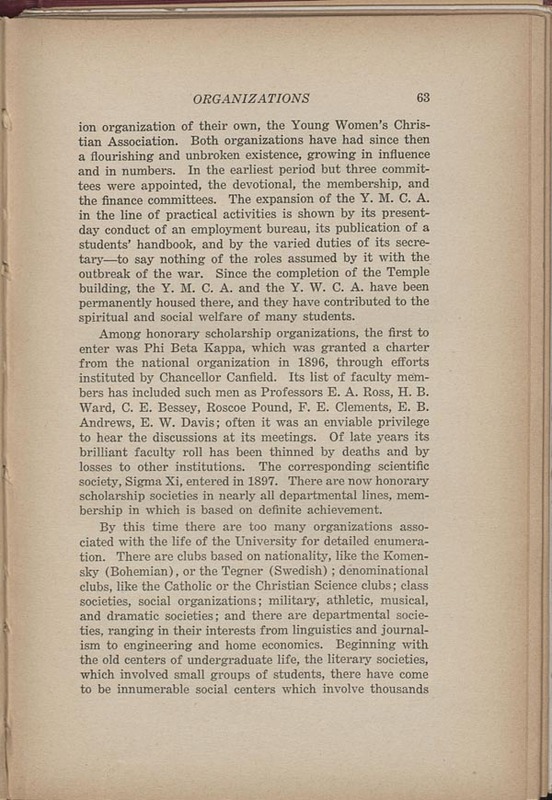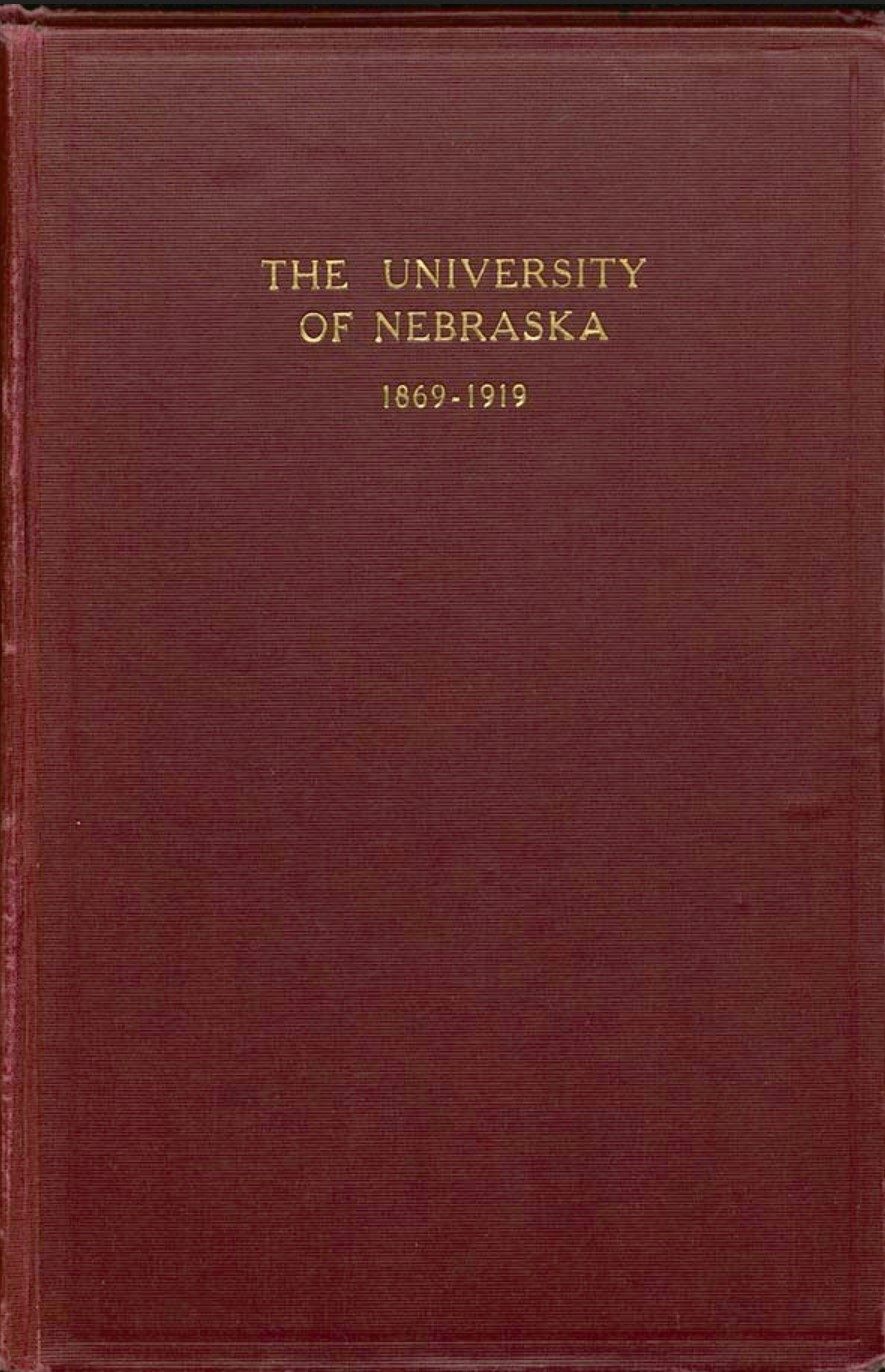067
Item
-
Title
-
067
-
Description
-
Semi-Centennial Anniversary Book: The University of Nebraska, 1869-1919
-
Transcription
-
ion organization of their own, the Young Women's Christian Association. Both organizations have had since then a flourishing and unbroken existence, growing in influence and in numbers. In the earliest period but three committees were appointed, the devotional, the membership, and the finance committees. The expansion of the Y. M. C. A. in the line of practical activities is shown by its present-day conduct of an employment bureau, its publication of a students' handbook, and by the varied duties of its secretary—to say nothing of the roles assumed by it with the outbreak of the war. Since the completion of the Temple building, the Y. M. C. A. and the Y. W. C. A. have been permanently housed there, and they have contributed to the spiritual and social welfare of many students.
Among honorary scholarship organizations, the first to enter was Phi Beta Kappa, which was granted a charter from the national organization in 1896, through efforts instituted by Chancellor Canfield. Its list of faculty members has included such men as Professors E. A. Ross, H. B. Ward, C. E. Bessey, Roscoe Pound, F. E. Clements, E. B. Andrews, E. W. Davis; often it was an enviable privilege to hear the discussions at its meetings. Of late years its brilliant faculty roll has been thinned by deaths and by losses to other institutions. The corresponding scientific society, Sigma Xi, entered in 1897. There are now honorary scholarship societies in nearly all departmental lines, membership in which is based on definite achievement.
By this time there are too many organizations associated with the life of the University for detailed enumeration. There are clubs based on nationality, like the Komensky (Bohemian), or the Tegner (Swedish); denominational clubs, like the Catholic or the Christian Science clubs; class societies, social organizations; military, athletic, musical, and dramatic societies; and there are departmental societies, ranging in their interests from linguistics and journalism to engineering and home economics. Beginning with the old centers of undergraduate life, the literary societies, which involved small groups of students, there have come to be innumerable social centers which involve thousands
-
Rights
-
To inquire about usage, please contact Archives & Special Collections, University of Nebraska-Lincoln Libraries. These images are for educational use only. Not all images are available for publication.



